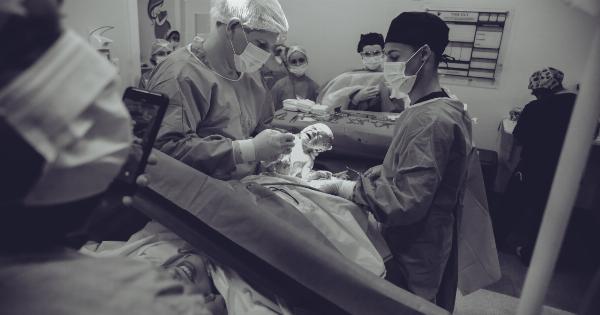Postpartum bleeding is a natural occurrence after giving birth to a baby. It is also known as lochia or the discharge that occurs after delivery for up to six weeks.
This type of bleeding is not a cause of concern for most women, but it is essential to keep an eye on it. In some cases, postpartum bleeding can become heavy and prolonged, which may require medical attention. In this article, we will discuss the causes of postpartum bleeding in women in detail.
1. Uterine Contractions
The uterus is a muscle that contracts and expands to help push the baby out during delivery. After the delivery, the uterus continues to contract and decrease in size, which helps to stop the bleeding.
These postpartum contractions, also known as afterbirth pains, can cause mild to severe cramps, which may worsen during breastfeeding. The cramps also help expel any remaining placental tissue and blood clots from the uterus.
2. Delayed Delivery of the Placenta
The placenta is a vital organ that connects the baby to the mother’s uterus during pregnancy. After the baby is delivered, the placenta separates from the uterine wall and is expelled from the body.
In some cases, the placenta does not separate correctly, which can cause heavy bleeding. This condition, known as retained placenta, may require manual removal of the placenta by a doctor using gentle traction.
3. Vaginal Tears or Episiotomy
Vaginal tears may occur during delivery, especially if the baby is large or if the delivery is too quick. The tears can cause mild to severe bleeding, which may require stitches.
An episiotomy is a surgical cut made in the area between the vagina and anus to widen the opening for the baby’s head during delivery. This cut can cause moderate bleeding, which should stop in a few days with proper care.
4. C-Section Delivery
A caesarean section (C-section) is a surgical procedure in which the baby is delivered through an incision in the mother’s abdomen and uterus. It is often done when vaginal delivery is not possible or poses a risk to the mother or baby.
C-section delivery can cause heavy bleeding, which may require a blood transfusion or surgical intervention to stop the bleeding.
5. Prolonged Labor
Prolonged labor, also known as dystocia, occurs when the labor lasts for more than 20 hours in a first-time mother and more than 14 hours in a subsequent delivery.
Prolonged labor can result in reduced blood flow to the uterus, which can cause heavy bleeding after delivery. It may also increase the risk of infection and postpartum hemorrhage.
6. Uterine Atony
Uterine atony is a condition in which the uterus does not contract effectively after delivery. This condition can cause heavy bleeding and may require medication or surgical intervention to stop the bleeding.
Women who have had a previous C-section delivery or give birth to multiple babies are at higher risk of developing this condition.
7. Infection
Postpartum infection is a common complication that can occur after delivery. It can cause heavy bleeding, fever, chills, and foul-smelling discharge. Infection can occur in the uterus, urinary tract, or perineal area.
Prompt treatment with antibiotics is necessary to prevent further complications.
8. Blood Clots
After giving birth, the body is more prone to blood clots, especially in the legs. Blood clots can cause heavy bleeding, pain, and swelling in the affected area.
Women who have had a previous history of blood clots or a family history of blood clots are at a higher risk of developing this complication.
9. Placenta Accreta
Placenta accreta is a rare but serious condition in which the placenta grows too deeply into the uterine wall. This condition can cause severe bleeding after delivery and may require surgical intervention to remove the uterus.
Women who have had a previous C-section delivery or placenta previa are at higher risk of developing this condition.
10. Hormonal Changes
Hormonal changes after delivery can cause postpartum bleeding. The hormone oxytocin helps the uterus contract and decrease in size, which helps to stop the bleeding.
However, if the hormonal balance is disturbed, it can cause heavy bleeding or delayed recovery after delivery.



























